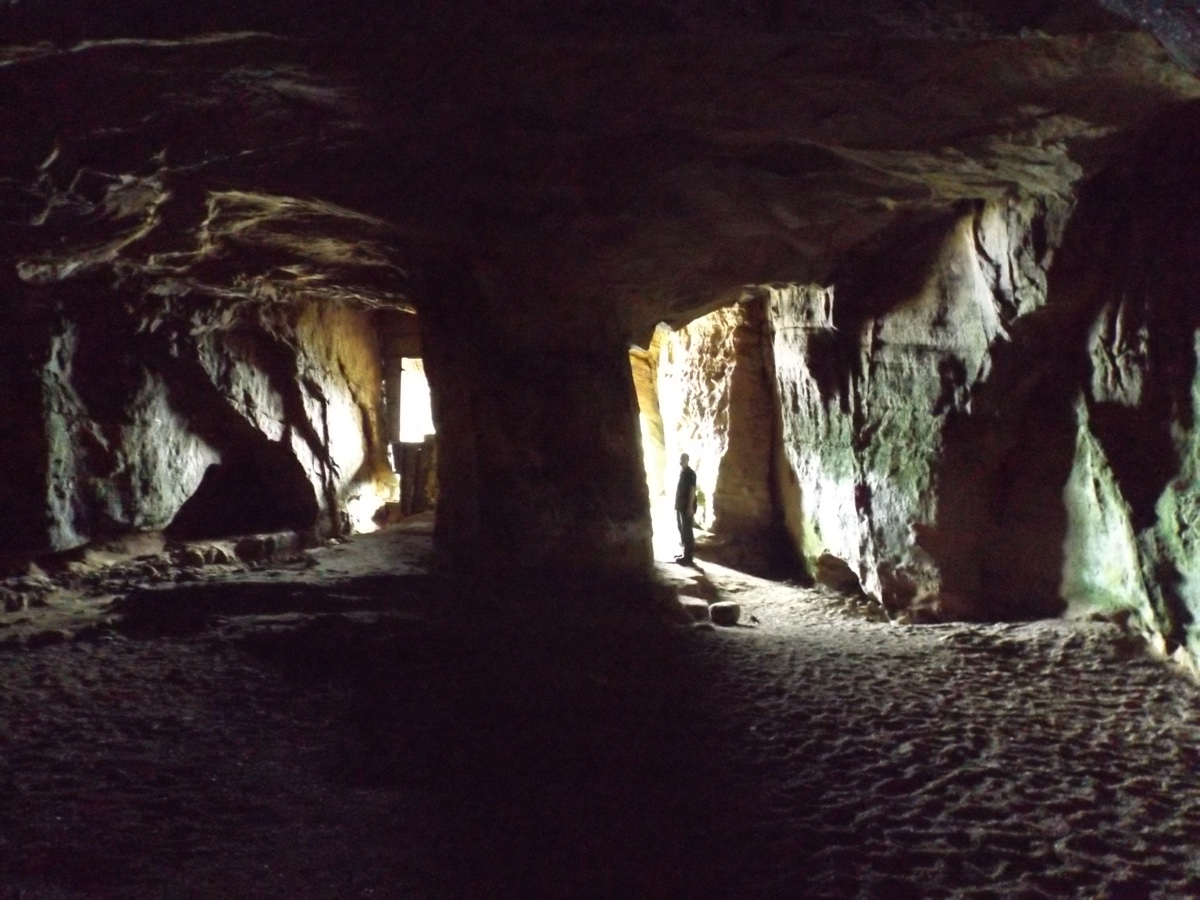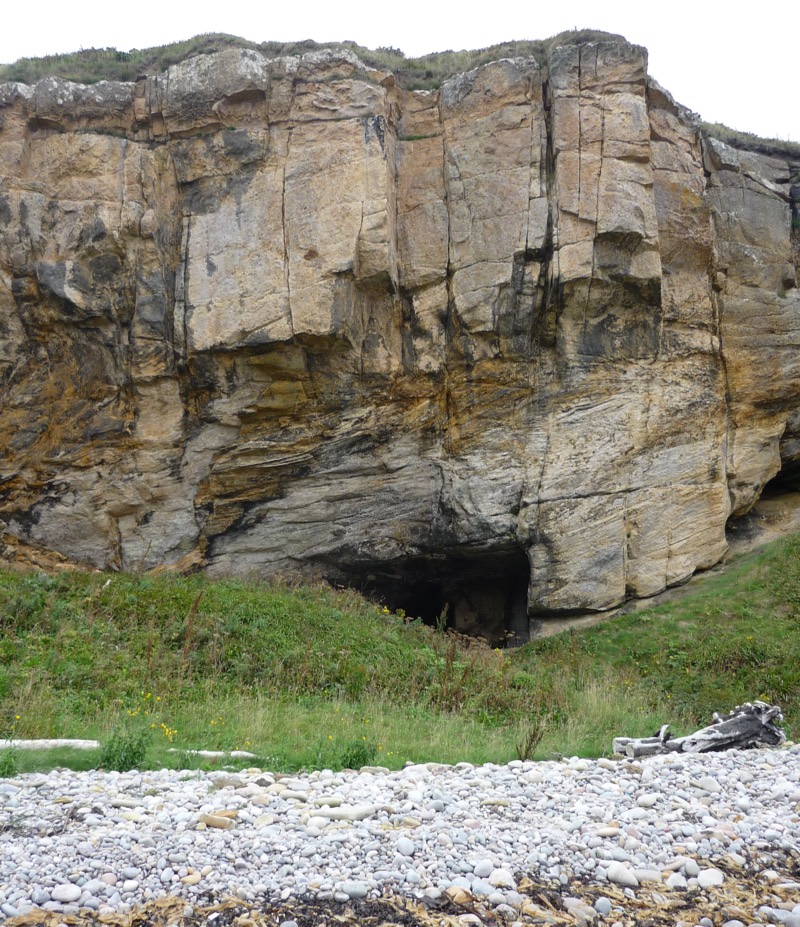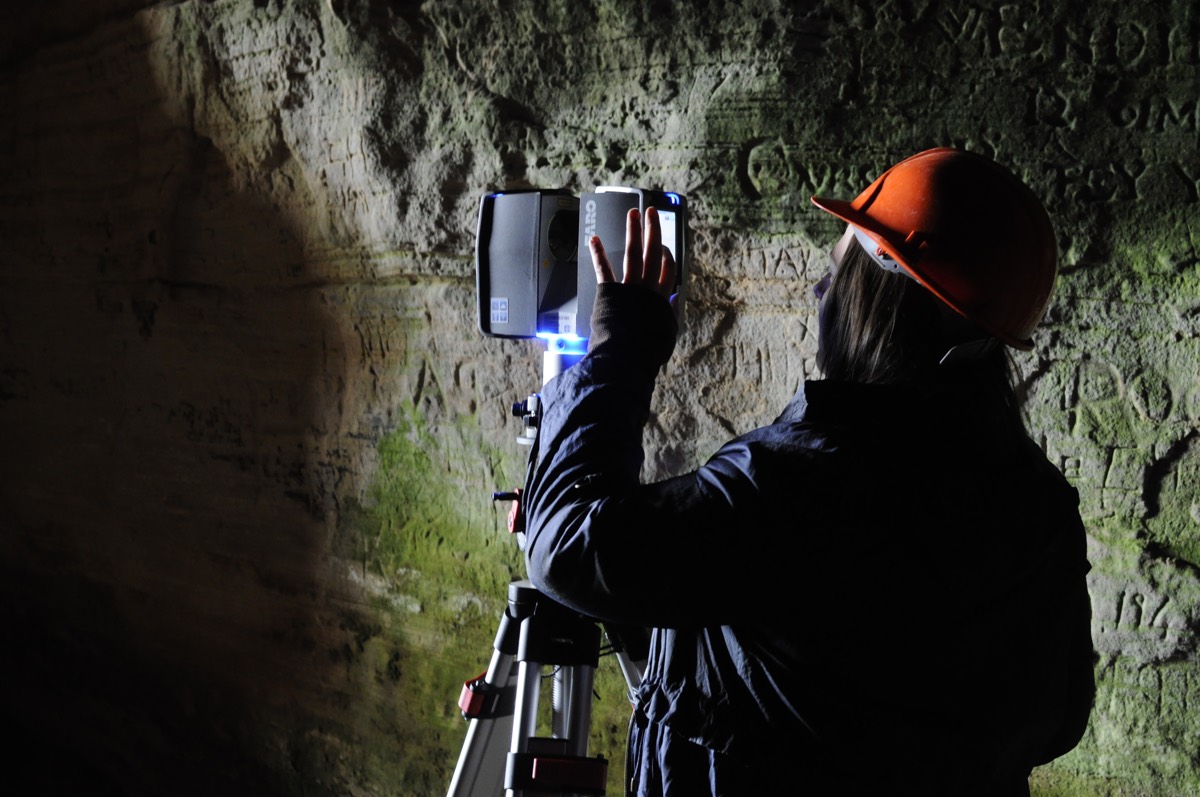Ancient 'Cave of the Dead” Revealed in 3D Model

A forbidding sea cave in the far north of Scotland — feared since ancient times as a place of the dead and the scene of at least one gruesome act of execution or human sacrifice — is getting a breath of new life. Archaeologists have mapped the mysterious cave for the first time to create a digital three-dimensional model that can be explored online in virtual reality.
The cave in Moray, overlooking the North Sea, has been known since the 1860s as the Sculptor's Cave, due to stone symbols that were carved on the forbidding entranceway between A.D. 500 and 600. [See Photos of Scotland’s Forbidding Sea Caves]
The carved stone symbols were made by the Pictish people — who lived in what is now Scotland during the late Iron Age and Early Medieval periods — and include a fish, a crescent and a V shape, archaeologist Ian Armit of the University of Bradford in the United Kingdom told Live Science.
The symbols might be names, or a warning. "Some people think that they indicate personal names, or even maybe tribal names," Armit said. "But we can't really read them — we can just recognize that they are regular symbols, and that they clearly had some kind of meaning."
The only access to Sculptor’s Cave along the windswept coastline is treacherous and can only be attempted at low tide, he said.
"The site is pretty hard to get to, so if people want to appreciate it and want to understand it, then the idea was to create a resource that was as close to being in the cave without actually having to get there."
The three-dimensional digital model will be made available for the public to explore on the website of the Elgin Museum in Moray, Armit said.
Sign up for the Live Science daily newsletter now
Get the world’s most fascinating discoveries delivered straight to your inbox.
Cave of the Dead

Armit and his University of Bradford colleague, archaeologist Lindsey Büster, are studying the archaeology of Sculptor's Cave, as well as other caves in the sandstone sea cliffs of the remote Moray region.
Human remains dating to the late Bronze Age, along with material traces like hair rings and pins from clothing, have been found in Sculptor's and many other caves, Armit said.
Archaeologists first excavated Sculptor's Cave in the 1920s and again in the 1970s, finding that it was used as a place where the dead were left to rot until their bones might be collected or removed.
"The activity begins around about 1000 B.C., and we seem to find at that period the site is being used for the laying out of bodies to do with funeral rights," Armit said.
"During that period, right across Britain, you don't find much in the way of burial, and you don't find much in the way of cremation," he said. "The general thinking is that people practiced what's called excarnation, or exposure burial, such as you get in various parts of the world even today."
"The bodies are left to decay naturally … and we've got indications that bones were cleaned, we've got evidence of cutting and polishing on some of the bones," Armit said. "So we think people went back and visited these bones."
Gruesome heritage
As well as reviewing the records of the earlier excavations in detail, Buster and Armit used ropes and ladders to explore Sculptor's Cave with three-dimensional, laser-scanning equipment.

Armit said they used a terrestrial laser scanner to map the cave's main chamber and twin entrance passageways and higher-resolution techniques such as structured light scanning to capture features in detail, such as the Pictish symbols.
"With the animation, you can see as it goes through that we switch to the more detailed, structured light scans at various points, to highlight a particular carving," he said. "We tried to get a blend of techniques that brought the cave to life."
The Pictish symbols that have made the cave famous seemed to have been made after the cave ceased to be used as a mortuary or excarnation site, he said.
"The cave is used as a mortuary site from the late Bronze Age [until about 800 BC] through the Iron Age [800 B.C. until about 1 B.C.] and into the Roman Iron Age [1 B.C. until about 400 A.D.], and what happens is that the human activity inside the cave seems to stop around about 400 A.D. – the symbols are the last thing that happens."
"We suspect that it might be to do with a sort of a commemoration of the cave, or even a sort of symbolic closure of the cave, and the fact that they're at the entrance — so they could be saying 'go back, this is a dangerous place, keep out,' or they could be trying to claim ownership of it in some way," Armit said.
Execution, or sacrifice?
The archaeological evidence from Sculptor's Cave also tells of a gruesome episode in the late prehistory of the cave, when people were killed there in a group, in an act of human sacrifice, execution or a massacre. [25 Cultures That Practiced Human Sacrifice]
"One particular group of human remains indicate a number of individuals were decapitated in the cave itself … and from the radiocarbon dating that we've done, it looks like this is actually one event, around about 250 A.D., something like that," Armit said.
"At least six people, possibly more, [were beheaded], so this is something very dramatic, an execution or sacrifice or something of that kind," Armit said. “And that happens towards the end of the cave's use, so it was quite different than what was going on before,” Armit said.
Human sacrifice was not known to be common to the peoples of the region at that time, but "there are very few sites of that period where human remains are being found at all, so we don't have much to compare it with for that period," he said. "So Sculptor's Cave is quite a unique location."
Original article on Live Science.
Tom Metcalfe is a freelance journalist and regular Live Science contributor who is based in London in the United Kingdom. Tom writes mainly about science, space, archaeology, the Earth and the oceans. He has also written for the BBC, NBC News, National Geographic, Scientific American, Air & Space, and many others.









